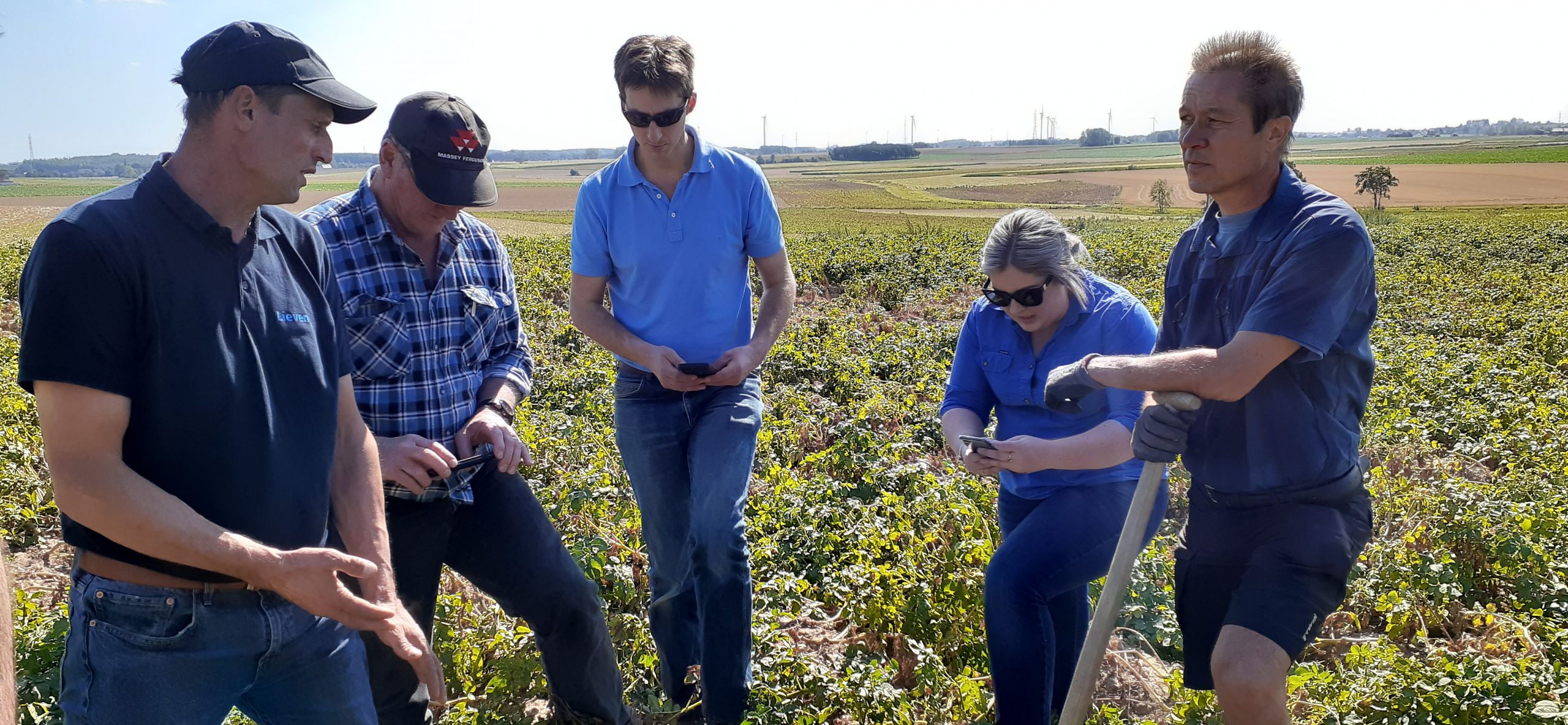
Aussie growers and processors get a taste of the European potato industry
20 April 2020
Searching for vegetable innovation
21 April 2020The third Vegetable Innovation Workshop brought together an all-new speaker line-up to help growers generate innovative product ideas and inspire them with success stories. The theme for this event was ‘Developing valued, visible vegetable products’ and was held at Monash University in 2017. In January 2018, Jarrod Strauch shared some of the day’s highlights.
Even though consumers know vegetables are the healthiest food they can buy, it can be difficult to convince them to make more space in their shopping trolleys for our industry’s produce. In a retail sector that’s continually evolving to meet consumer demands, it’s vital the vegetable industry keeps up by offering innovative food products that grab consumers’ attention and add the value they’re looking for. To help growers equip themselves with knowledge about new product development, MacTavish West Pty Ltd coordinated the third Vegetable Innovation Workshop: Developing valued, visible vegetable products at Monash University’s Food Innovation Centre on 4 August 2017. This was part of the project Vegetable Industry Education and Training Initiative (VG15028, VegPRO), a strategic levy investment under the Hort Innovation Vegetable Fund.
Ideas and insights
Generating innovative ideas is key for any grower looking to enter the market with a new product or work with a manufacturer to create one. To lead the day, Hazel MacTavish-West from MacTavish West Pty Ltd discussed the opportunities for product development, and Susie White from Eat.Drink.Innovate gave attendees a mental toolkit for creating innovative product ideas.
Ms White explained that growers can generate new ideas by using the ‘SCAMPER’ method to think about how to Substitute, Combine, Adapt, Modify, (re-)Purpose, Eliminate and Reverse core elements of vegetables and veggie products. For example, adapting vegetables to new uses – like processing zucchini to turn it from a refrigerated item into a shelf-stable product – can help create new consumption opportunities and increase consumer intake. Alternatively, finding ways to substitute vegetables for other ingredients can help sway consumers to increase their vegetable purchases without having to make major adjustments to their eating patterns.
Dr Denise Hamblin from Colmar Brunton also shared insights into how consumers think about food, with a focus on the next generation of shoppers and their shift towards a ‘rebellion’ mindset, including controlling their nutritional intake through customised diets.
Dr Hamblin equipped growers with practical information about consumers’ packaging preferences – such as the way novel packaging shapes attract attention and off-shelf physical markers near products can draw sales. Using colour to create product expectations, such as green to communicate freshness or earthy tones to suggest ‘authenticity’, can also improve consumer perceptions and generate sales.
Success stories
Some of the most valuable information from the workshop came from the experiences of industry members who had transformed their businesses with value-added products.
Susie Daly from Daly Gourmet Potatoes took the group through the creation of the company’s pre-prepared potato salads and its innovative decision to branch into alcoholic drinks. By creating value-added products that meet consumer needs for convenience, and finding new uses for produce that would otherwise face rejection, Ms Daly said that the company has created valuable alternate income streams.
Later, Nicole Lenske from OneHarvest shared the company’s learnings from the LoveBeets range – a collection of fresh-cooked baby beetroot products. Ms Lenske highlighted the importance of online branding for products, and how LoveBeets integrated social media to build its internationally successful brand.
Ms Lenske also discussed what the company learnt from its attempts at an ‘Infused’ line, emphasising the importance of achieving consistent product quality and managing consumer expectations about shelf life. As Ms Lenske explained, even factors like in-store location can influence success: many consumers go to the deli for ready-to-eat products or snack plates and use the fresh-cut produce fridge for salad ingredients. Knowing when (and how) consumers will eat your product can help you target the best placement and avoid inadvertently locking out potential buyers.
Opportunities and resources
The workshop also featured industry experts who shared knowledge about packaging innovations, resources and opportunities available for growers ready to step into new product development. Angela Child from Inpact Innovation and Gilad Sadan from N.A.V.I Co. Global discussed how packaging can add value and shelf-life to vegetables, as well as open new product categories.
Attendees heard how consumers are eager to avoid waste, which motivates them to seek pre-packed products and greater shelf-life for their vegetables, but this can also deter them from the plastic packaging that makes these options possible. Education about packaging formats, including their purpose and environmental footprint, can result in major improvements to consumer perceptions and tap into new meal occasions.
With industry funds going towards a range of product development and consumer alignment activities, Queensland vegetable grower Belinda Adams discussed how Hort Innovation and strategic levy investments can help growers looking to begin their own product innovation, including the online resources guide that has been created to help connect growers and service providers.
Finally, Dr Angeline Achariya from Monash University’s Food Innovation Centre discussed how to make products stand out on the supermarket shelf and how the Innovation Centre can help growers to prototype and test their product ideas.
Ms White capped off the day by leading a collaborative ideation session. With such a jam-packed line-up of speakers and great networking opportunities, as well as tours of the Food Innovation Centre’s virtual supermarket and packaging testing facilities, it was difficult to do the workshop justice in one magazine article – so the AUSVEG team produced InfoVeg TV and InfoVeg Radio episodes interviewing speakers and growers at the event.
Click on the links below to access these great resources.
Find out more
InfoVeg Radio is available online and InfoVeg TV can be viewed here.
This workshop was delivered as part of the VegPRO project, which was funded by Hort Innovation using the vegetable research and development levy and contributions from the Australian Government.
Project Number: VG15028

